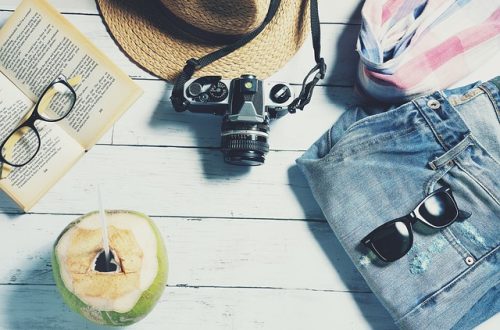
A 6-Step Travel Budgeting Framework That Actually Works
Traveling is one of life’s most enriching experiences, but it often comes with the stress of managing money. Whether you’re planning a weekend getaway or a month-long international trip, budgeting is essential. That’s why I created this 6-step travel budgeting framework that helps you plan smarter and enjoy your travels without the financial regret later. If you’re tired of overspending or just want to be more intentional, these travel budgeting tips will help you take control.
This guide breaks down travel budgeting into simple, realistic steps that anyone can follow. It doesn’t matter if you’re a college student backpacking across Europe or a family planning a Disney vacation. With these practical travel budgeting tips, you’ll create a budget that works and stick to it with ease.
Step 1: Define Your Total Travel Budget
Before you can plan any trip, you need to know how much you can actually afford to spend. This is the foundation of every good travel budget. Take a look at your income, savings, and any travel funds you’ve already set aside. Be honest about what you can comfortably spend without dipping into money meant for bills or emergencies.
Set a total travel budget number that feels doable. This is where most travel budgeting tips begin. Once you have that number, everything else in your budget will flow from it. For example, if you know you have $2,000 to spend, you’ll automatically start making smarter choices about where you go and how you get there.
This number should include everything: flights, lodging, food, local transport, attractions, insurance, and extras like souvenirs or tips. The clearer you are on your total amount, the easier it will be to break it down later.
Step 2: Break Down Your Expenses by Category
Now that you know your total budget, it’s time to divide it into categories. This is one of the most important travel budgeting tips, as it helps you see where your money will go and where you might need to cut back.
Typical categories include:
- Transportation (flights, buses, trains, taxis)
- Accommodations (hotels, hostels, Airbnb)
- Food and drinks
- Activities and attractions
- Travel insurance
- Emergency fund or buffer
- Shopping and souvenirs
Assign a realistic amount to each category based on your destination and travel style. For example, if you’re heading to Southeast Asia, your accommodation and food might cost less, allowing you to spend more on activities. If you’re going to Switzerland, accommodations and transport will take up more of your budget.
These travel budgeting tips work best when you research average costs ahead of time. Use blogs, travel forums, and budgeting websites to get a feel for prices in your chosen destination.
Step 3: Use Travel Tools to Estimate Costs
One of the best travel budgeting tips is to use online tools and apps to help estimate your travel costs. Tools like Numbeo, Budget Your Trip, and Rome2Rio give you insight into the real cost of food, transport, and accommodations in nearly every country.
You can also use flight comparison websites like Google Flights, Skyscanner, and Kayak to track airfare trends. Booking.com and Hostelworld are great for researching accommodation prices.
Use a spreadsheet or budgeting app to plug in your estimates for each category. This step will show you whether your current plan fits your total budget. If not, you’ll need to adjust either your destination or your spending in one or more categories.
These travel budgeting tips are about making informed choices. Estimating in advance keeps you from running out of money halfway through your trip.
Step 4: Plan for Hidden and Extra Costs
Most people forget to include hidden costs in their travel budgets, which can lead to stress and overspending. Good travel budgeting tips always include preparing for unexpected or extra expenses.
These might include:
- ATM withdrawal fees
- Foreign transaction fees
- Tipping customs
- Checked baggage fees
- Airport transfers
- Snacks, water, and miscellaneous purchases
- Currency exchange rate losses
Build a buffer into your budget, ideally 10–15% of your total. This gives you breathing room when surprises pop up. Even if you don’t use it, having that extra cushion will make you feel more confident while traveling.
Also, make sure you budget for travel insurance. It’s easy to skip, but it can save you thousands if something goes wrong. Use travel budgeting tips that include protecting your investment, not just spending less.
Step 5: Track Your Spending While You Travel
Creating a budget is only half the work. Sticking to it while on the road is where the real magic happens. One of the most overlooked travel budgeting tips is to track every expense while traveling.
Use budgeting apps like Trail Wallet, TravelSpend, or even a simple notes app on your phone to record daily spending. Separate your expenses by category so you can see if you’re overspending on meals or saving in other areas.
Daily tracking helps you catch problems early. If you’ve spent too much on food the first few days, you can cut back on the next meals or adjust your activity spending. This level of awareness keeps you in control and avoids that end-of-trip regret many travelers feel.
If you’re traveling with a group or partner, share expenses openly and check in regularly. It keeps things fair and reduces stress over money.
Step 6: Reflect and Improve for Next Time
When your trip ends, take time to review how your budget worked. These final travel budgeting tips will help you improve for your next trip. Look at what you spent in each category and compare it to your original plan. What went over? What came in under budget?
Ask yourself questions like:
- Did I set a realistic budget for the destination?
- Where did I splurge and was it worth it?
- Were there any surprises I didn’t account for?
- How can I save more on my next trip?
This step helps you fine-tune your process and grow more confident with each trip. Over time, you’ll get better at creating budgets that feel good and work in real life.
Many people think budgeting means limiting fun. But the best travel budgeting tips show that planning ahead actually gives you more freedom. You can enjoy every moment knowing you’re spending wisely and not digging a financial hole you’ll deal with later.
Travel doesn’t have to be expensive. With this 6-step framework and a few travel budgeting tips, you can explore more, stress less, and come home with amazing memories — not credit card debt.
If you have your own favorite travel budgeting tips or a story of a trip where budgeting made all the difference, I’d love to hear about it. Sharing what works helps all of us travel smarter.




